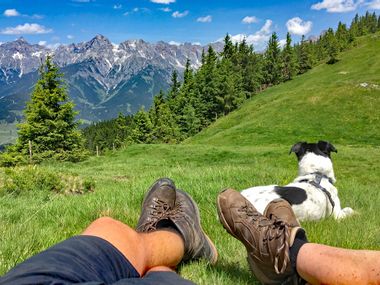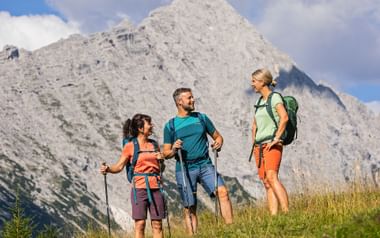They are available in all shapes and sizes. Whether for hiking in the high mountains, for ice climbing or for a trekking trip: hiking boots are non-negotiable, so you can stride through the mountain world well laced up. Because hiking is wonderful, liberating and simply does you good. But only if nothing pinches, burns, scrapes, or hurts. This happens when footwear just doesn’t fit properly. Whether it’s simply a case of having chosen the wrong shoe for the respective hike or because the shoes were out of date. We would therefore like to give you a few important tips that will save you from a painful hiking experience.
The right hiking boots






